- Home
- Clive Cussler
Polar Shift Page 18
Polar Shift Read online
Page 18
The tusks were starting to curve, making it likely that the animal was a male. In an adult, they could be sixteen feet long. The ears were small and the trunk was stubby compared to the body. Even at full maturity, the trunk would be shorter than that of a modern-day elephant. The body was covered with chestnut-colored hair. From its size, she estimated the mammoth at seven or eight months of age.
Karla thought this could be the most perfectly preserved example of Mammuthus primigenius that had ever been discovered. Most mammoth remains consisted of chunks of meat and bone. This was a whole animal, and in far better condition than Effie, the partial carcass discovered at Fairbanks Creek, and the Russian specimens, Dima and Zharkov, or, the most famous one of all, the quick-frozen Beresovka carcass, whose flesh was still edible. The animal’s stomach contained the buttercups it had eaten a short time before its death. Karla turned to the other scientists.
“It’s marvelous,” she said. “Where did you find it?”
“Babar was in the bank of an old riverbed,” Maria said.
“Babar?”
“We had to name the poor little thing something,” Maria said. “I once had a book about Babar, who was king of the elephants.”
“I think it’s a wonderful name. Congratulations to all of you,” Karla said with a smile. “This must be the scientific find of the century.”
“Thank you,” Maria said. “Unfortunately, this discovery presents something of a problem for our expedition.”
“I don’t understand.”
“It’s almost dinnertime,” Arbatov said. “Let’s discuss this around the table.”
From the size of the belly hanging over Arbatov’s belt, it was apparent that he didn’t miss many dinners. They moved to the big tent. In the convivial surroundings, it was hard to believe they were on a remote Arctic island. The folding table was covered with a flowered, plastic tablecloth. The soft glow of lanterns contributed to the atmosphere with a warm, yellow glow. Gas heaters kept the interior of the tent warm and cozy, even though the fabric slapped from the cool breeze that had come up off the water.
The meal started with Ukrainian borscht, moved on to a hearty beef goulash, with ponchiki cookies for dessert. All washed down with tea, and followed with high-octane vodka that took the edge off the late-afternoon coolness. After sampling Maria’s cooking, Karla understood that Sergei’s girth may not have been all his own fault.
Karla downed her last cookie. “I’m amazed that you can turn out such great food under relatively primitive conditions.”
“There is no need to starve, or eat freeze-dried food like the Americans like to do,” Maria said. “As long as I have fire, a pot and the right ingredients, I can cook as well as the finest Moscow restaurant.”
Karla raised her glass of vodka. “I want to congratulate you again on your find. You must be very happy.”
Dr. Sato’s Japanese ear for subtlety picked up on Karla’s oblique attempt to introduce a touchy subject into the dinner conversation.
“Thank you,” he said. “As we indicated earlier, it is a bit of a problem.” He glanced at Arbatov.
The Russian nodded. “You know what we are trying to do with this expedition?”
“Yes,” Karla said. “You are trying to find the remains of a mammoth that will lend itself to cloning.”
“Correct,” Arbatov said. “The seeds for this project were planted in 1999, when a multinational expedition unearthed some promising remains in a block of frozen mud.”
“The Zharkov mammoth,” Karla said. The remains had been named after the Siberian family that owned the land where they were found.
“That’s right. There was a great deal of interest in the beast from a number of genetic research facilities from all parts of the world. They said that if DNA could be extracted from the soft tissues it might be used to clone a woolly mammoth.”
“The mud yielded only bones and no soft tissue, as I recall.”
“With no soft tissue, the cloning attempt died, but not the interest. Experiments continued,” Arbatov said. “A group of Japanese and Chinese researchers cloned two cows, using skin cells from a dead cow embryo that was kept frozen at the same temperature as the Russian permafrost. Since then, expeditions have continued to search for suitable remains in Siberia. My wife and I work for a Siberian wildlife park that plans to impregnate a female Indian elephant as a surrogate to produce a partial-mammoth offspring, then repeat with its offspring as well. They hope to have a creature that is eighty-eight percent woolly mammoth in fifty years.”
“This is a joint venture with the Japanese,” Dr. Sato said, picking up the thread of the explanation. “Students from Kinki University and veterinary experts from Kagoshima, where Dr. Ito is from, have been looking in Siberia for DNA samples since 1997. There are estimated to be ten million mammoths buried beneath the Siberian permafrost, so we came here hoping to find what we need.”
“How would the cloning be done?” Karla said.
“It’s extremely complicated. Every step has to work perfectly,” said Ito, the veterinary expert. “We would extract a complete DNA strand from soft tissue, remove an egg from a female elephant, which would be irradiated to destroy its DNA. We would replace it with mammoth DNA and insert it in the elephant. The elephant’s normal gestation period is twenty-two months, but we have no idea what it would be for this creature. Nor do we know how to care for the baby hybrid.”
“Any one of those obstacles would be formidable by itself,” Karla said.
“Finding the soft tissue has been the most difficult obstacle to overcome,” Maria said.
“Up to now,” Karla said.
“Ideally, we would like to have found a pregnant mammoth,” Maria said, “but this may do very nicely.”
“I’m puzzled,” Karla said. “It seems to me that you have a surplus of riches locked in the body of the young animal in the shed.”
The exchange of glances among the four scientists was almost comical.
Dr. Sato said, “There is a jurisdictional dispute. Like two parents fighting over the custody of a child.”
“You don’t need possession of the whole body. A sample of DNA should be sufficient.”
“Yes,” Sato said. “But you know how competitive the scientific world is. Whoever brings the specimen home will get a major boost to his or her career and wealth.”
“Who found it?”
Arbatov shrugged. “Sato and Ito, but we claimed ownership because we helped remove it to the shed and it’s on Russian soil.”
“Wasn’t there an agreement to govern this sort of thing?”
“Yes, but no one thought we’d ever find a specimen so perfect,” Maria said.
“We’re all rational people,” Arbatov said. “Maria was instrumental in helping us curb our male tempers. We’ve had some spirited discussions, and talked at great length whether we should even tell you. We decided that it would be impractical to hide it from you, as well as intellectually dishonest. We are still at a loss at what to do.”
“You’re right. You do have a problem,” Karla said.
Four heads nodded in agreement.
“But it’s not an unsolvable problem,” she added, and the heads froze in midnod.
“Please, don’t tell us to play Solomon and split the baby down the middle,” Arbatov said.
“Not at all. The answer seems fairly obvious. Go out and find another specimen. There may be others like this in the same vicinity. I’ll help you. I’ve done extensive topographical studies of Ivory Island going back to the Pleistocene period, when the steppes here teemed with the creatures. I think I can place you at the areas of greatest concentration and environmental conditions, increasing the odds in your favor.”
Dr. Sato said, “In our country, we value consensus over confrontation. I propose that we look for second specimen. If we have not found it when the ship returns, we will tell our respective sponsors about the situation and let them fight it out in court.”
Maria dipl
omatically deferred to her husband. “Sergei? As project director, what do you think?”
“I think that Ms. Janos has offered a solution that we can all live with.”
“There’s a quid pro quo,” she said. “Maybe you can help me with my project.”
“My apologies,” Dr. Sato said. “We’ve been so self-absorbed with our own issues that we’ve become impolite. What exactly do you hope to find here?”
“An answer to the riddle of the mammoth.”
“The Pleistocene extinction?” Maria said.
Karla nodded. “Picture this island twenty thousand years ago. The land outside our tent was green with vegetation. The earth shook with the thunder made by the feet of vast herds of Mammuthus. These creatures stood up to fourteen feet tall, making them the largest of all the elephants. Their great herds roamed the ancient world, going back more than three million years. They were in North America, from North Carolina to Alaska, in most of Russia and Europe, and even in Britain and Ireland. But by eight thousand B.C., they were nearly gone, except for remnants here and there. The herds of mammoths vanished, along with hundreds of other species, leaving their frozen bones to puzzle scientists like us.”
“The extinction is one of the greatest mysteries in the world,” Maria said. “Mammoths, mastodons, saber-toothed tigers—all disappeared from the face of the earth ten to twelve thousand years ago, along with nearly two hundred other species of large mammals. Millions of animals died on a global scale. What do you hope to find here?”
“I’m not sure,” Karla said. “As you know, there are three theories explaining the extinction. The first is that the Clovis people hunted them to extinction.”
“The main problem with that theory is that it doesn’t explain the extinction in the rest of the world,” Arbatov said.
“There is also no fossil evidence to support this idea, so we move on to theory two, that a killer virus swept through the mammal populations of the world.”
“So you think the virus theory is the most plausible?” Dr. Sato said.
“Yes and no. I’ll get back to it after we discuss the third theory, drastic climate change. Near the end of the period, the weather changed suddenly. But that theory has a big hole in it. Creatures on a number of islands survived. They would have died out if the extinction were weather related.”
“So if it wasn’t overhunting, or a virus or climate change, what was it?” Sergei said.
“The argument has always boiled down to two schools of thought. Catastrophism, which says that a single event or a series of events caused the extinction. And uniformism, which maintains that extinction happened over a long period of time, from a number of causes.”
“Which are you, a catastrophist or a uniformist?” Arbatov said.
“Neither. No single theory fits all the facts. I think it is all of the above, with the extinction set in motion by a cataclysm or series of cataclysms. Tsunamis. Volcanic eruptions that produced killing clouds and gas, altering the pattern of vegetation.”
“There’s a hole in that theory too,” Arbatov said. “The evidence suggests that extinction occurred over a period of hundreds or thousands of years.”
“That wouldn’t be a problem. My theory takes into account the discovery of vast numbers of mammoths found tumbled in a common grave, and explains why some of the creatures survived long after that. Evidence demonstrates that many were killed by sudden violence. But we also know that a few mammoth species were around when the Egyptians were building the Pyramids. The cataclysm weakened the mammoth herds to a point where disease and hunters could polish them off. The extinction of certain species had a ripple effect. The predators that preyed on the mammoths and other creatures would lose their food source.”
“I think you’re onto something, but you’re saying that this worldwide cataclysm occurred suddenly. One minute, the mammoths were peacefully chewing on grass. The next, they were on their way to extinction. Isn’t that far-fetched?”
“Not at all. But I would be the first to admit that the theory of polar shift is controversial.”
“Polar shift?”
“A realignment of the poles.”
“None of us is a geologist,” Arbatov said. “Please explain.”
“I’d be glad to. There are two types of polar shift. A ‘magnetic polar shift’ would involve a reversal of the magnetic poles, causing all sorts of unpleasantness but nothing we couldn’t survive. A ‘geologic polar shift’ would mean actual movement of the earth’s crust over its molten core. Something like that could create a cataclysm like the one I believe killed the mammoths as a species.”
Arbatov was unconvinced. “You’re basing your extinction theory on the theoretical shifting of the poles? You’ll have to admit that it’s unlikely that such a disruption could occur.”
“On the contrary. It has happened, and could happen again.”
Arbatov made a show of taking Karla’s glass. “Our guest has had a little too much vodka.”
“I’ll be glad to let you read my paper setting forth my theory, Dr. Arbatov. I think you’ll find it enlightening. Especially the equations showing how a disruption in the electromagnetic field of the earth could precipitate a polar reversal.”
An argument broke out around the table between those who agreed with her theory and those who didn’t. Despite their civilized veneer, it was evident that some tension remained among the group. She wasn’t surprised. Scientists were no different from anyone else, except they were possibly more vain and petty. Maria’s forcefully pleasant personality broke up the verbal brawl.
“My apologies for being so rude to a guest,” she said, shooting dagger eyes at her husband. “What are your plans for tomorrow?”
With Arbatov neutralized, the argument ended as quickly as it started.
“Maybe someone could show me where you found Babar.”
She was told that it would not be a problem. Everyone helped Maria clean up. A short while later, Karla was in her sleeping bag.
The old building was remarkably tight and warm, and, except for the scurrying of tiny animals, she felt quite comfortable. In her excitement over the baby mammoth, she found it hard to sleep.
She remembered a good-night poem her grandfather used to recite to her when she went to live with him after her parents died.
She hardly got past the first line before she fell fast asleep.
19
THE TROUTS FLEW INTO Albuquerque late in the afternoon and drove to Santa Fe, where they stayed the night. Early the next morning, they got into their rental car and headed toward Los Alamos, which was located on a natural citadel atop the three mesas that extended from the Panaretos Plateau.
Trout noticed a change in his wife during the twenty-five-mile drive. She had been chatting about the scenery, wishing they had time to stop at an Indian pueblo, when she became uncharacteristically silent.
“A penny for your thoughts,” he said. “Adjusted for inflation, of course.”
“I was just looking at this peaceful landscape, thinking about the work here with the Manhattan Project and the terrible forces it unleashed.”
“Someone was bound to do it. Just be glad that we were the first.”
“I know that, but it still depresses me to think that we still haven’t learned how to control the genie that we let out of the bottle.”
“Cheer up. Nuclear power may be old hat compared to whirlpools and waves on steroids.”
Gamay gave him a sour look. “Thanks for pointing out the bright side.”
Los Alamos had changed a great deal from the day when Robert Oppenheimer and his team of geniuses figured out how to put the power of the atom into a metal, finned cylinder. It was a bustling southwest town with malls, schools, parks, a symphony orchestra and theater, but it has never been able to—or wanted to—escape its dark past. Although the Los Alamos National Laboratory is engaged these days in a number of peaceful scientific explorations, the ghost of the Manhattan Project lingers still.
The Trouts stopped at the national laboratory’s research library and talked to a research assistant they had contacted earlier. She had prepared a folder with information about Lazlo Kovacs, but most of it was biographical and offered nothing beyond what they already knew about the scientist. Kovacs, it seemed, was pretty much a footnote. Like Tesla, about whom more was known, Kovacs had become a cult figure, the assistant explained, and his theories belonged more in the area of science fiction than science.
“Maybe we’ll learn more at the Kovacs Society,” Gamay said.
The assistant gave the Trouts a blank look, and then she burst into laughter.
“What’s wrong?” Gamay said.
The assistant blushed and said, “I’m sorry. It’s just that—well, you’ll see.”
She was still laughing when she ushered them to the door.
The contact at the Kovacs Society was an ebullient-sounding man whose name was Ed Frobisher. When they called Frobisher, he said he’d be out and about doing errands and suggested that they meet him at a surplus store called the Black Hole.
The shop was on the edge of town next to an A-frame with a sign out front designating it as the OMEGA PEACE INSTITUTE, FIRST CHURCH OF HIGH TECHNOLOGY. The church and the Black Hole were owned by a local named Ed Grothus, who had bought up decades of lab surplus that went back to the Manhattan Project days. He called it “nuclear waste,” and advertised his wares for mad scientists, artists and pack rats.

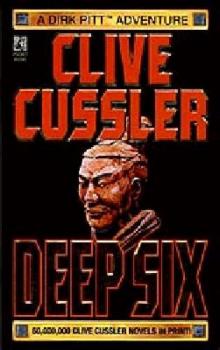 Deep Six
Deep Six Odessa Sea
Odessa Sea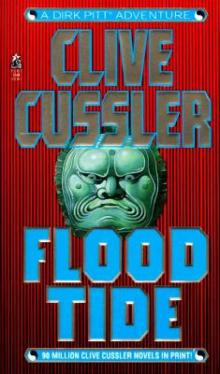 Flood Tide
Flood Tide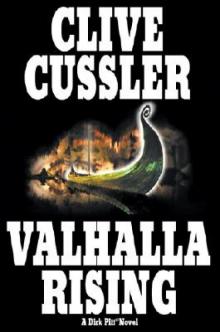 Valhalla Rising
Valhalla Rising Thriller 2
Thriller 2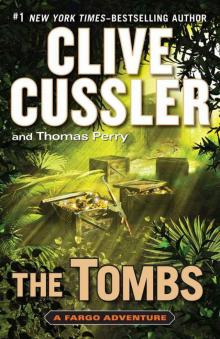 The Tombs
The Tombs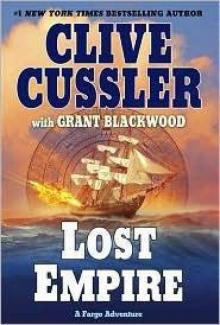 Lost Empire
Lost Empire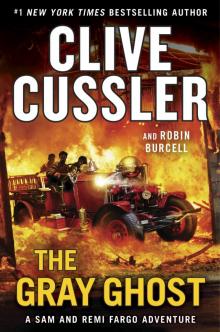 The Gray Ghost
The Gray Ghost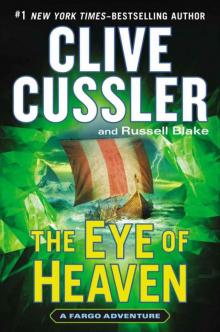 The Eye of Heaven
The Eye of Heaven Polar Shift
Polar Shift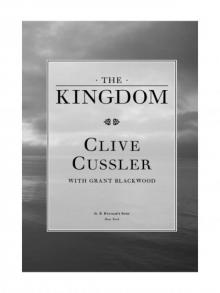 The Kingdom
The Kingdom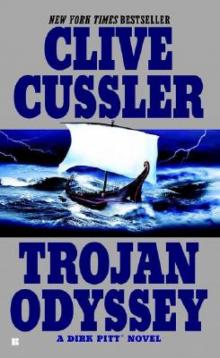 Trojan Odyssey
Trojan Odyssey Shadow Tyrants
Shadow Tyrants Nighthawk
Nighthawk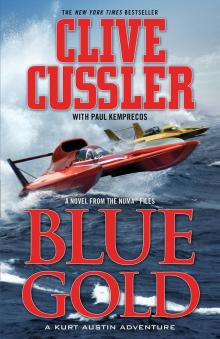 Blue Gold
Blue Gold Serpent
Serpent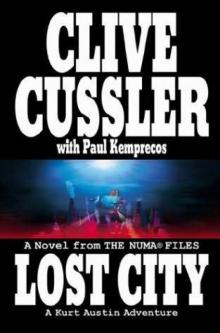 Lost City
Lost City The Gangster
The Gangster White Death
White Death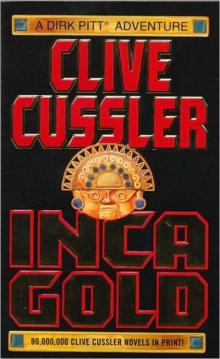 Inca Gold
Inca Gold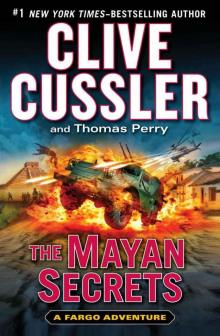 The Mayan Secrets
The Mayan Secrets The Pharaoh's Secret
The Pharaoh's Secret The Emperor's Revenge
The Emperor's Revenge Corsair
Corsair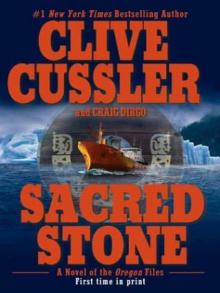 Sacred Stone
Sacred Stone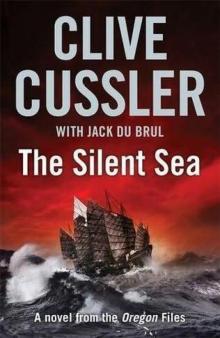 The Silent Sea
The Silent Sea The Rising Sea
The Rising Sea Black Wind
Black Wind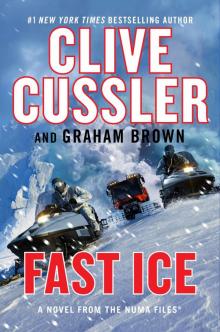 Fast Ice
Fast Ice Ghost Ship
Ghost Ship Marauder
Marauder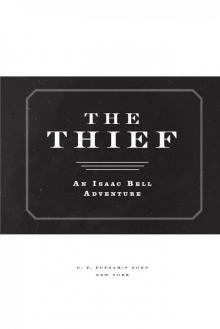 The Thief
The Thief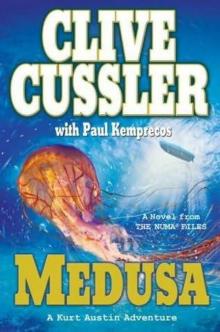 Medusa
Medusa Typhoon Fury
Typhoon Fury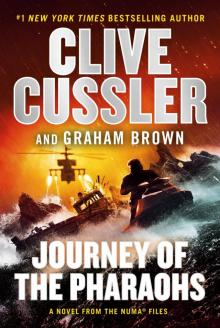 Journey of the Pharaohs
Journey of the Pharaohs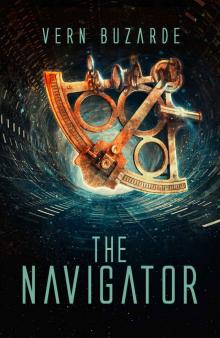 The Navigator
The Navigator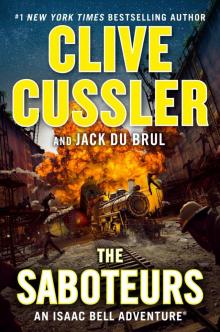 The Saboteurs
The Saboteurs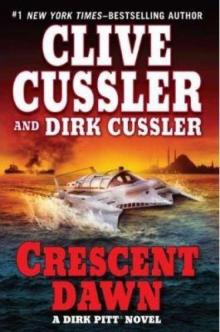 Crescent Dawn
Crescent Dawn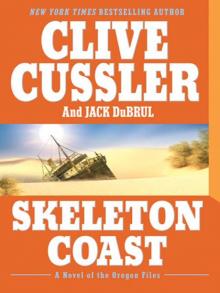 Skeleton Coast
Skeleton Coast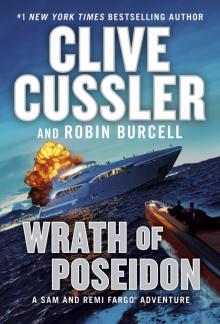 Wrath of Poseidon
Wrath of Poseidon The Mediterranean Caper
The Mediterranean Caper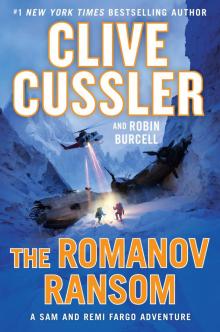 The Romanov Ransom
The Romanov Ransom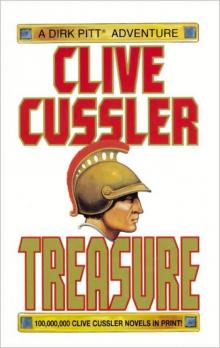 Treasure
Treasure The Race
The Race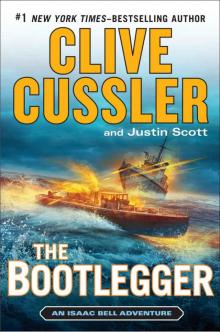 The Bootlegger
The Bootlegger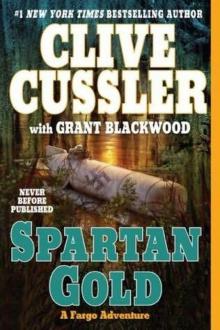 Spartan Gold
Spartan Gold Havana Storm
Havana Storm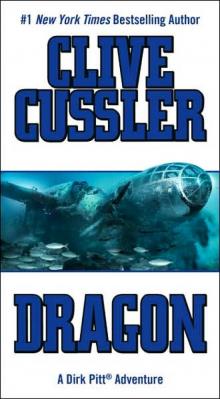 Dragon
Dragon Piranha
Piranha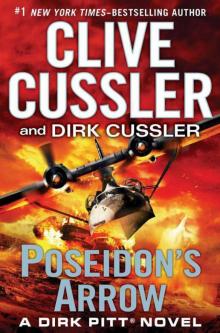 Poseidon's Arrow
Poseidon's Arrow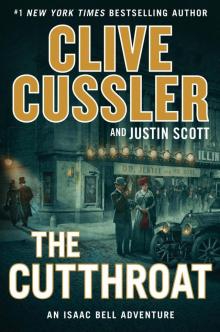 The Cutthroat
The Cutthroat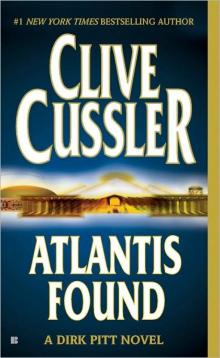 Atlantis Found
Atlantis Found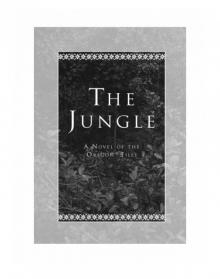 The Jungle
The Jungle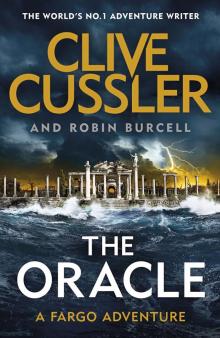 The Oracle
The Oracle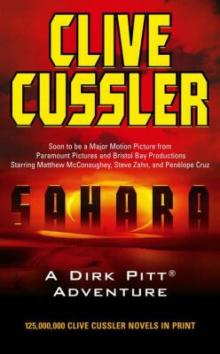 Treasure / Dragon / Sahara: Clive Cussler Gift Set
Treasure / Dragon / Sahara: Clive Cussler Gift Set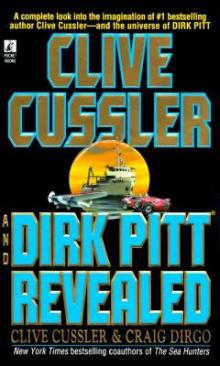 Clive Cussler and Dirk Pitt Revealed
Clive Cussler and Dirk Pitt Revealed The Sea Hunters
The Sea Hunters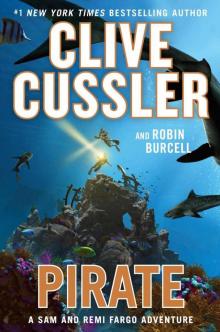 Pirate
Pirate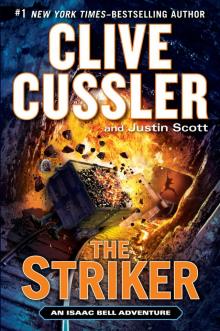 The Striker
The Striker Plague Ship
Plague Ship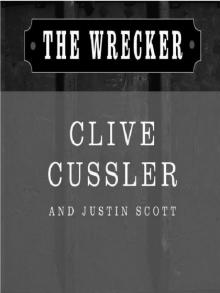 The Wrecker
The Wrecker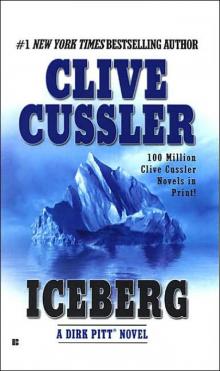 Iceberg
Iceberg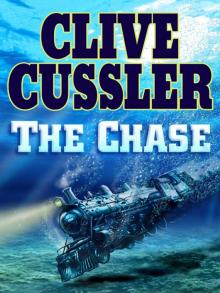 The Chase
The Chase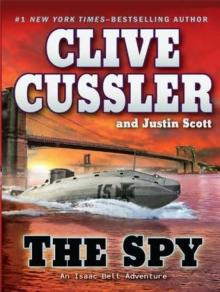 The Spy
The Spy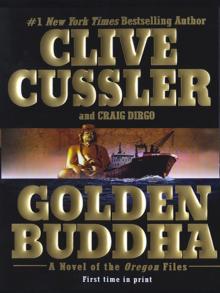 Golden Buddha
Golden Buddha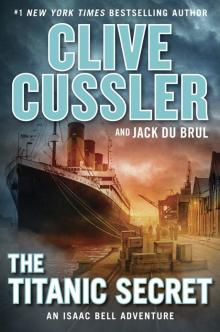 The Titanic Secret
The Titanic Secret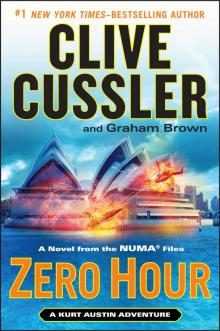 Zero Hour
Zero Hour Fire Ice
Fire Ice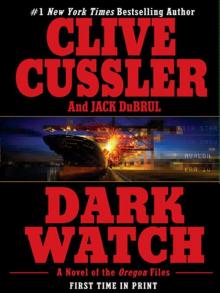 Dark Watch
Dark Watch The Storm
The Storm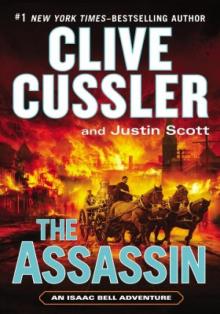 The Assassin
The Assassin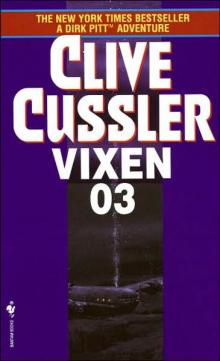 Vixen 03
Vixen 03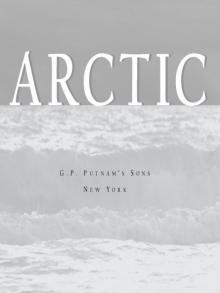 Arctic Drift
Arctic Drift Night Probe!
Night Probe! Cyclops
Cyclops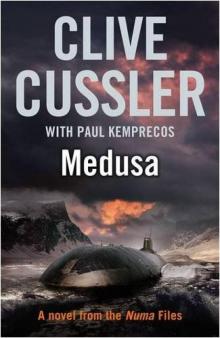 Medusa nf-8
Medusa nf-8 Shock Wave dp-13
Shock Wave dp-13 Marauder (The Oregon Files)
Marauder (The Oregon Files)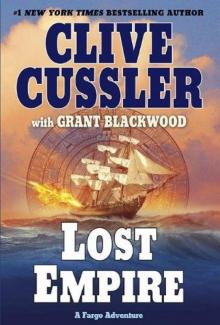 Lost Empire fa-2
Lost Empire fa-2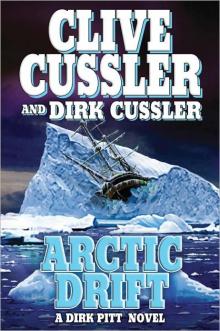 Arctic Drift dp-20
Arctic Drift dp-20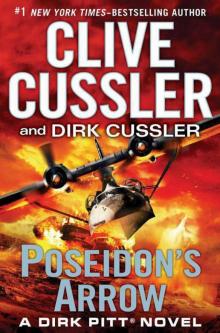 Dirk Pitt 22 - Poseidon's Arrow
Dirk Pitt 22 - Poseidon's Arrow Treasure of Khan dp-19
Treasure of Khan dp-19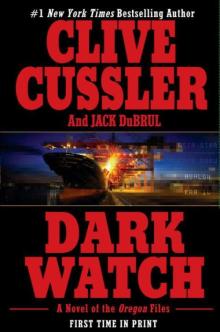 Dark Watch of-3
Dark Watch of-3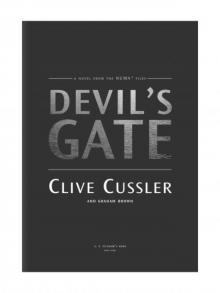 Devil's Gate
Devil's Gate The Sea Hunters II: More True Adventures with Famous Shipwrecks
The Sea Hunters II: More True Adventures with Famous Shipwrecks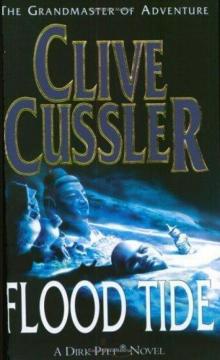 Flood Tide dp-14
Flood Tide dp-14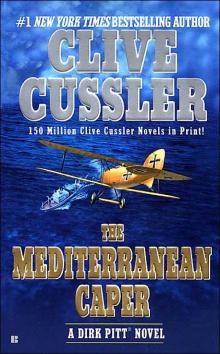 The Mediterranean Caper dp-2
The Mediterranean Caper dp-2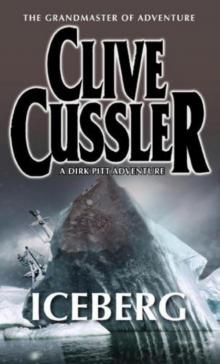 Iceberg dp-3
Iceberg dp-3 Sahara dpa-11
Sahara dpa-11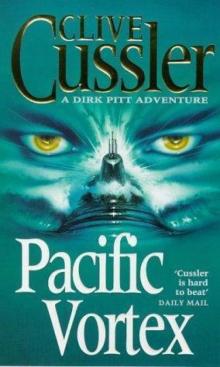 Pacific Vortex! dp-1
Pacific Vortex! dp-1 Deep Six dp-7
Deep Six dp-7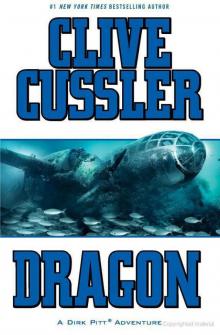 Dragon dp-10
Dragon dp-10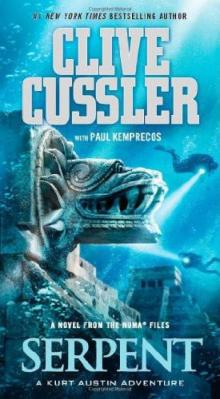 Serpent nf-1
Serpent nf-1 Havana Storm (Dirk Pitt Adventure)
Havana Storm (Dirk Pitt Adventure)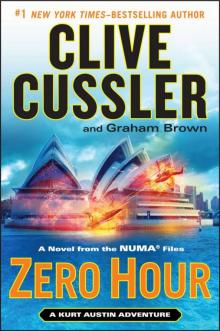 Zero Hour nf-11
Zero Hour nf-11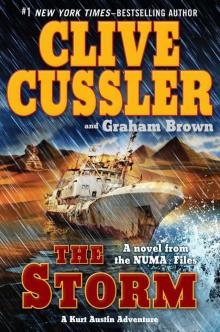 The Storm nf-10
The Storm nf-10 The Thief ib-5
The Thief ib-5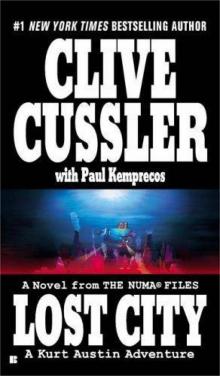 Lost City nf-5
Lost City nf-5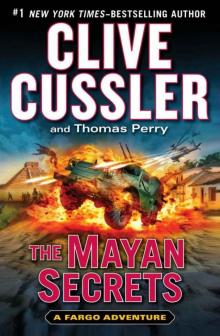 The Mayan Secrets fa-5
The Mayan Secrets fa-5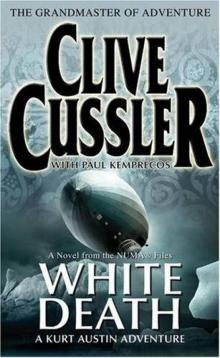 White Death nf-4
White Death nf-4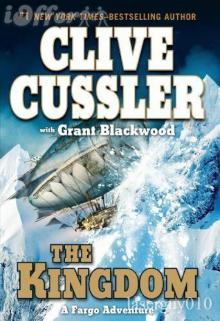 The Kingdom fa-3
The Kingdom fa-3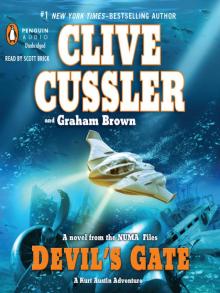 Devil's Gate nf-9
Devil's Gate nf-9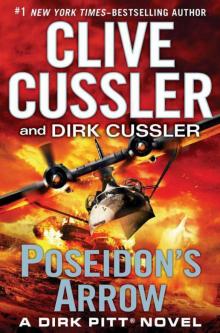 Poseidon's Arrow dp-22
Poseidon's Arrow dp-22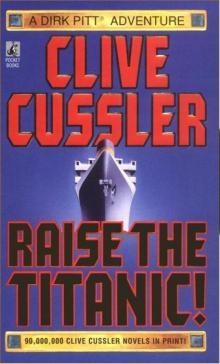 Raise the Titanic dp-4
Raise the Titanic dp-4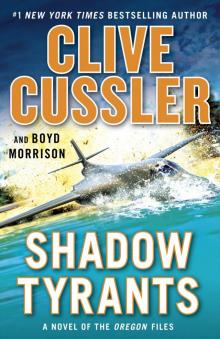 Shadow Tyrants--Clive Cussler
Shadow Tyrants--Clive Cussler Sacred Stone of-2
Sacred Stone of-2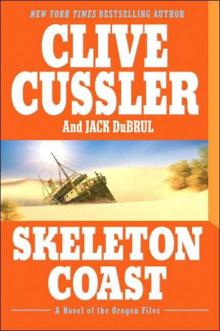 Skeleton Coast tof-4
Skeleton Coast tof-4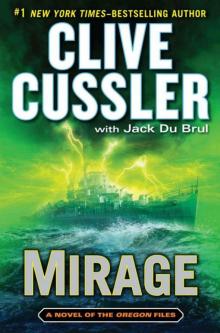 Mirage tof-9
Mirage tof-9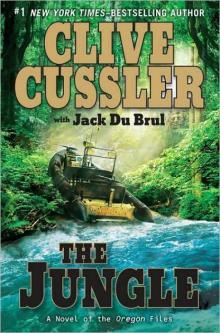 The Jungle of-8
The Jungle of-8 The Emperor's Revenge (The Oregon Files)
The Emperor's Revenge (The Oregon Files)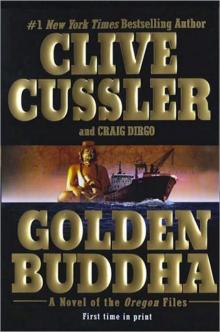 Golden Buddha of-1
Golden Buddha of-1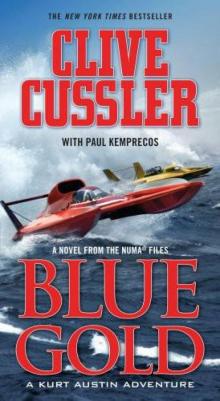 Blue & Gold
Blue & Gold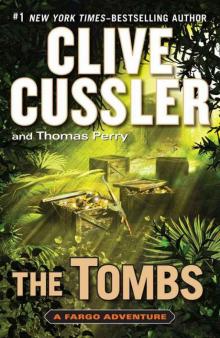 The Tombs fa-4
The Tombs fa-4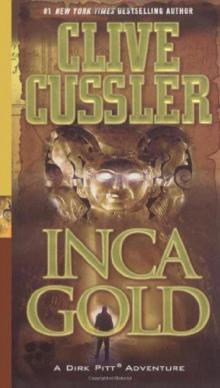 Inca Gold dp-12
Inca Gold dp-12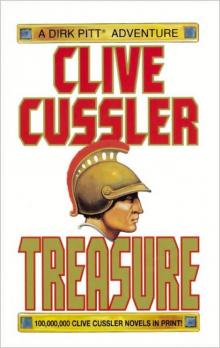 Treasure dp-9
Treasure dp-9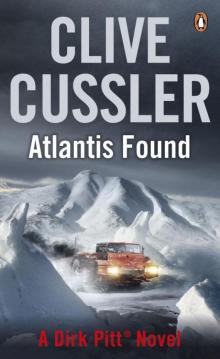 Atlantis Found dp-15
Atlantis Found dp-15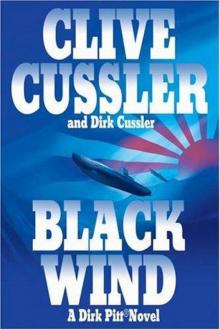 Black Wind dp-18
Black Wind dp-18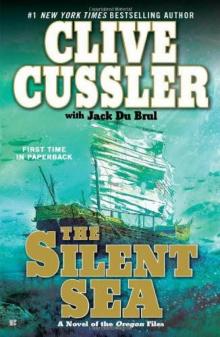 the Silent Sea (2010) tof-7
the Silent Sea (2010) tof-7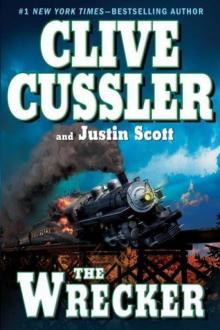 The Wrecker ib-2
The Wrecker ib-2 Fire Ice nf-3
Fire Ice nf-3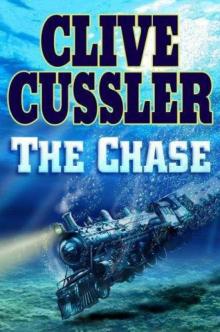 The Chase ib-1
The Chase ib-1 Sahara
Sahara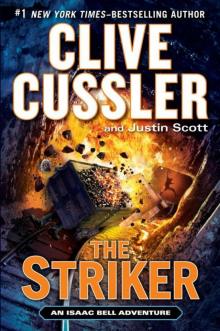 The Striker ib-6
The Striker ib-6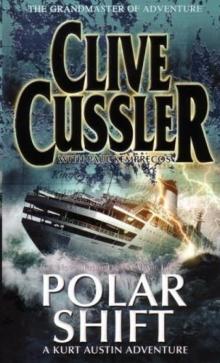 Polar Shift nf-6
Polar Shift nf-6 The Race ib-4
The Race ib-4 Corsair of-6
Corsair of-6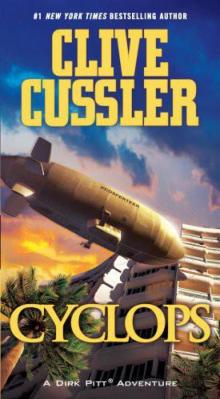 Cyclops dp-8
Cyclops dp-8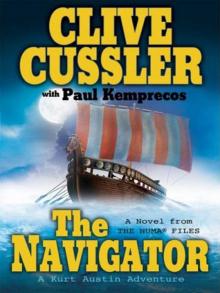 The Navigator nf-7
The Navigator nf-7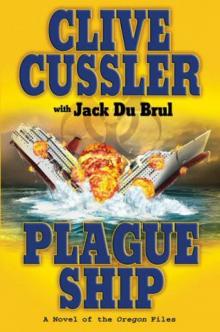 Plague Ship tof-5
Plague Ship tof-5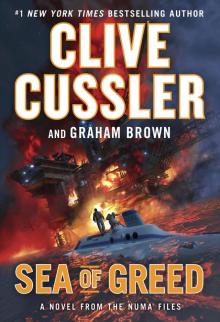 Sea of Greed
Sea of Greed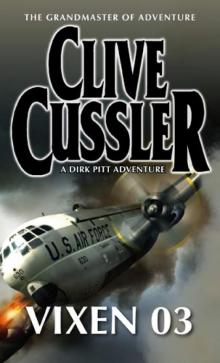 Vixen 03 dp-5
Vixen 03 dp-5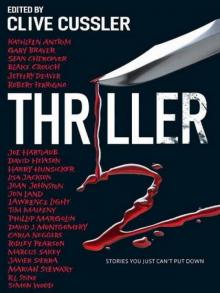 Thriller 2: Stories You Just Can't Put Down
Thriller 2: Stories You Just Can't Put Down